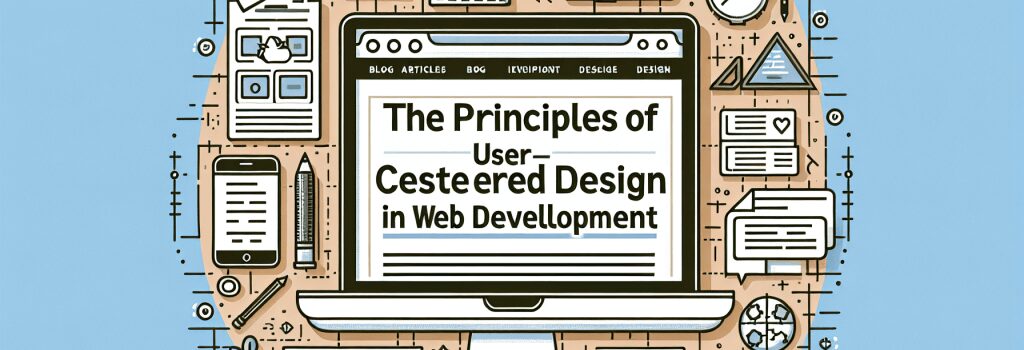The Principles of User-Centered Design in Web Development

Introduction to User-Centered Design in Web Development
User-Centered Design (UCD) is a framework of processes in which usability goals, user characteristics, environment, tasks, and workflow of a product are given extensive attention at each stage of the design process. In the realm of web development, incorporating UCD principles is crucial for creating websites and applications that not only look good but also provide an intuitive, satisfying experience for users. This approach focuses on understanding the needs, wants, and limitations of end-users at the core of web development practices.
Understanding Your Audience
Conducting User Research
The first step in a User-Centered Design approach is to understand who your users are. Conducting in-depth user research helps uncover the demographics, motivations, behavior patterns, and goals of your target audience. This can involve techniques such as surveys, interviews, and usage data analysis.
Creating Personas
From this research, you can create personas—fictionalized characters that represent your typical users. Personas help in making informed decisions by keeping the user’s perspective in the forefront during the design and development process.
Designing for Usability
Principles of UCD
There are several key principles of User-Centered Design that can guide web developers and designers:
1. Empathize with Users: Understanding users on an emotional level can help in creating solutions that truly resonate with their needs.
2. Validate Assumptions with User Feedback: Continuous testing and feedback gathering are essential to validate that the design meets user expectations.
3. Accessibility Matters: Ensure that your website is accessible to all users, including those with disabilities, to create an inclusive digital environment.
4. Simplicity Is Key: A cluttered, complex website can overwhelm users. Aim for simplicity in design to improve usability.
Incorporating Usability Features
To optimize for User-Centered Design, web developers should focus on creating features that enhance usability, such as:
– Navigation: Intuitive and consistent navigation aids in providing a smooth user experience.
– Loading Time: Efficient, fast-loading pages prevent user frustration and abandonment.
– Responsive Design: Ensuring your site is easily usable on a variety of devices and screen sizes is crucial in today’s mobile-first world.
– Content Hierarchy: Using headings, bullet points, and segmenting content makes information easily digestible for the user.
Iterative Design and Testing
User-Centered Design is an iterative process. This means designing, creating prototypes, testing, analyzing feedback, and refining the product repeatedly until it meets the user’s needs effectively.
Prototyping
Developing prototypes, from simple paper sketches to interactive digital models, can help visualize and test ideas before committing significant resources to development.
Usability Testing
Engaging real users in testing the website can uncover usability issues that might not have been apparent beforehand. This can include tasks like A/B testing, user observation, and employing usability questionnaires.
Conclusion
User-Centered Design is not just a methodology but a mindset that prioritizes user needs and experiences at every stage of the web development process. By understanding your audience, designing with usability in mind, and continuously iterating based on user feedback, you can create websites and applications that truly resonate with end-users. Implementing UCD principles leads to more engaging, efficient, and accessible websites, ultimately driving satisfaction and success in the digital sphere.


